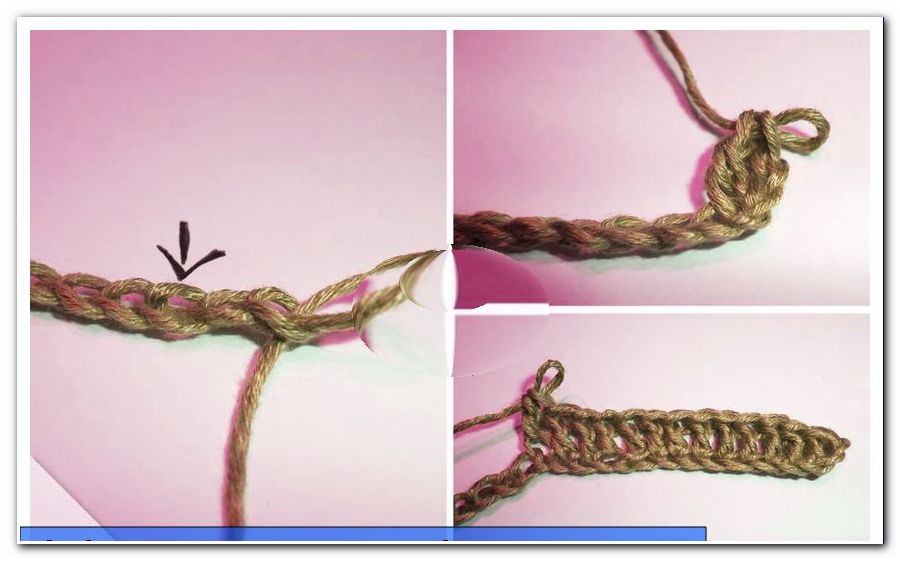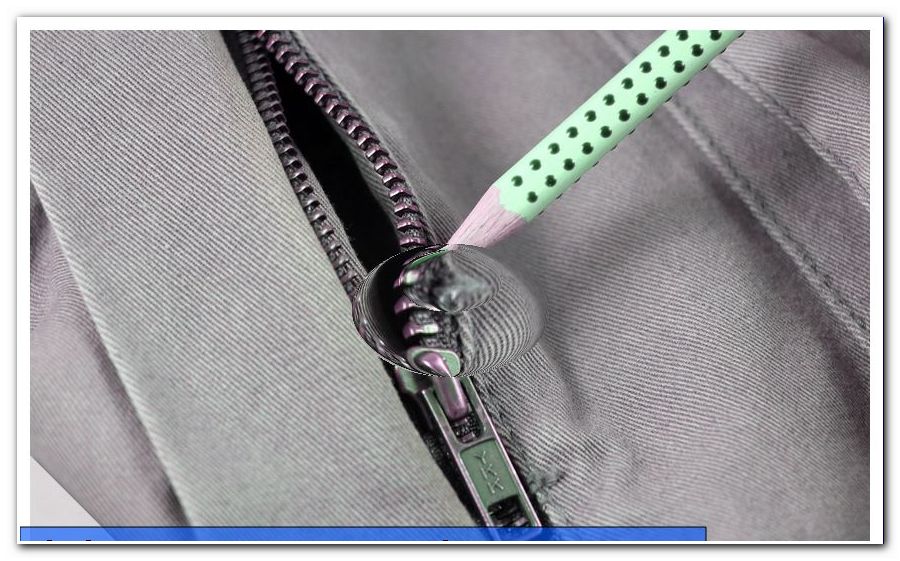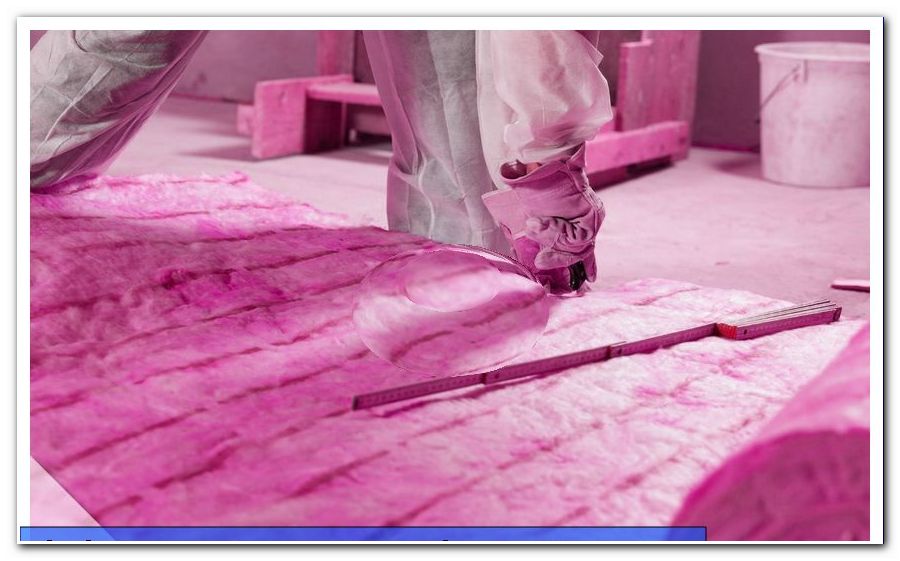Protection classes 1-3 in electrical engineering explained including examples

- protection classes
- Protection class division
- Protection class I: the protective earth
- Protection class II: The protective insulation
- Protection class III: The extra-low voltage
- Protection class 0
- Additional information
In order to reduce the risk of life-threatening electrical shocks, the protection classes I, II and III apply in electrical engineering. They are used to classify and mark safety measures on electrical devices. These include, among others, washing machines, lights or industrial vacuum cleaners. All electrical equipment that you can purchase in Germany is divided into one of three protection classes. A fourth protection class is now considered obsolete.
protection classes
Symbols of protection classes I - III
Electricity can be life threatening. Because we humans can neither see, nor smell or hear it, we depend on being protected against sudden electric shocks by clearly defined standards, high-quality electrical appliances and sensible protective measures. The classification into protection classes tells you more about the risk that comes from an electrical appliance.
The information about which protection class is concerned is particularly relevant for cabling or mounting of the device, since you will receive information about the existing safety measures with the help of the information. All protection classes are standardized according to DIN EN 61140 / VDE0140-1, the "basic safety standard for protection against electric shock".
Which protection classes are there ">
Protection class division
Purpose of classification into protection classes
Without the appropriate safety measures, there is always a risk that you will be shocked only by touching or indirectly connecting the faulty device (for example, to conductive floor coverings). Many components are conductive . For example, in the case of an iron, the metallic surface will be conductive if all safety measures fail.
But not even plastic parts can guarantee you absolute safety. For this reason, special safety precautions are inevitable. In the protection classes, the most risky devices in protection class I can be found again. With falling risk, however, the number of protection class increases. An exception is only the protection class 0.
Protection class I: the protective earth
 Symbolism - protection class 1
Symbolism - protection class 1
The symbol of protection class I consists of a circle with a vertical line in it, which is arranged at right angles to three horizontal lines. The single vertical bar can be used to remind you that this symbol is protection class I. Parts of the symbol are also used elsewhere to represent the grounding in general.
Typical devices
Devices that can be found in this protection class include the following.
- refrigerators
- electric cookers
- Washing machines
- Iron
- water heater
characteristics
The protection class I is characterized by the most extensive protection measures of all protection classes, namely by a double protection . In this case, in addition to a generally existing base insulation to the active, that is the electrically conductive parts of the electrical appliance grounding made. In electrical engineering, this also refers to equipotential bonding.
This can be done in two ways, depending on the device:
1. via a permanently installed connecting cable or
2. via a device plug with protective contact.

The so-called PE protective earth (Protection Earth) on the device, which you can recognize by its green-yellow stripes, is able to connect all the electrically conductive housing parts of the equipment to the ground. With the help of this measure, electrical currents are directly and safely dissipated, whereby they pose no more danger to humans or animals. Since almost every house can be operated with equipment such as those described above, a corresponding main protective conductor must be installed in each building, via which the grounding is carried out.
risks
Despite the elaborate and comprehensive safety precautions, the devices do not offer 100% security. So it is possible, among other things, that the protective conductor is interrupted or incorrectly connected. In this case, the safety measures no longer work and a life-threatening electrical accident can ultimately no longer be ruled out. It can not be guaranteed that the devices will automatically switch off.
Tip: If you are unsure about how to use electronics, you should leave the installation of Class I electrical equipment to an experienced professional.

Mobile electrical appliances of protection class I
Mobile electrical appliances can also be found in this protection class. They are characterized by a so-called safety plug, colloquially known as the "Schukostecker". This can only be plugged into appropriate sockets, but which are standard in most houses and sometimes outside of it. As soon as you plug in this plug, the protective connection with the protective earth conductor will be established first, which will last until the end - even in the event of damage. This is called leading contact.

Protection class II: The protective insulation
(or: safe electrical isolation)

Symbolism - Protection class 2
The symbol of the protection class II consists of a square that stands on one of its sides. In its center is another, only smaller square, which was arranged in the same orientation. Colloquially, this symbol is also referred to as a double square. To remember that the symbol represents protection class II, you only have to internalize the number of squares.
Typical devices
Devices that can be found in this protection class include the following.
- Power Tools
- hand lamps
- Equipment for hair and skin treatments
- Portable safety transformers
characteristics
All devices classified in this protection class have double or at least reinforced insulation between the mains circuit and the output voltage. The output voltage is the electrical voltage provided by the electrical circuit at its output. But the insulation can also exist between mains circuit and (metal) housing.
The insulation prevents humans or animals from touching the electrically conductive parts of the equipment. However, it is only relevant if there is a fault of the basic isolation. Otherwise, the additional isolated parts themselves would not carry any voltage . As in protection class I, special plugs are also found on the electrical devices of protection class II. These are much smaller or completely different from the so-called "Schukostecker", but fit - with a few exceptions - in the same sockets. The connectors are completely without protective conductor.

Protection class III: The extra-low voltage

Symbolism - protection class 3
The symbol of the protection class III consists of a square standing on a corner, in the center of which are three vertical lines parallel to each other.
With the help of the number of strokes, you can well remember that it is the protection class III.
Typical devices
Devices that can be found in this protection class include the following.
- various medical devices
- toys
- Appliances that can be used in bath or shower
characteristics
Electrical devices of protection class III are characterized by a comparatively low voltage, the so-called safety extra low voltage (SELV). It is a maximum of 50 volts AC or 120 volts DC. This can be achieved with the help of batteries or generators, which act as a source of voltage. Depending on the risk posed by the device, the voltage can also be significantly lower. Overall, these devices are considered to be the most secure equipment.
Relevant in this regard, the limit of 25 volts AC, or 50 volts DC. Class III devices with a voltage below this limit are considered to be particularly safe . They not only protect against indirect contact, but also when touched directly.
Due to the low voltage of the devices in the event of a fault, no danger to humans or animals, so that no special insulation (an exception is only the obligatory basic insulation), or grounding is necessary. Incidentally, earthing should always be avoided with protection class III devices. However, these properties also bring certain disadvantages: Of course, such a low voltage can only provide very little power.
Protection class 0
Not allowed in Germany.
symbolism
For devices of protection class 0, there is no symbol, as no marking is provided.
characteristics
In addition to protection class I, II and III, there is also the protection class 0. But they should no longer appear in the standard in the future. The reason: Apart from the obligatory basic insulation, the devices do not have any further protective measures against an electric shock. In addition, they can not be connected to a protective conductor system. Devices of this kind are not only not admitted in Germany, but also the state of Austria rejects them as inadmissible.
Demarcation to the degree of protection
Often the protection class is confused with the degree of protection. But the two terms can be clearly differentiated. The protection class is dedicated exclusively to the necessary safety measures to protect you from so-called "dangerous contact voltages". The term "protection class", also known as IP protection (Ingress Protection according to IEC 60529), describes the protection of the device itself against "contact, ingress of foreign bodies and water as well as impact resistance". This may, for example, be the type of housing.
Additional information
You would like to learn even more about the exciting topic of the protection classes in electrical engineering "> Connecting the ceiling lamp - simple instructions
Swell:
Otherwise, you will receive further interesting knowledge about protection classes in our selected sources.
- //de.wikipedia.org/wiki/Schutzklasse_(Elektrotechnik)
- //www.schmidbauer.net/de/elektrische-schutzklassen/
- //de.wikipedia.org/wiki/Erdung
- //de.wikipedia.org/wiki/Schutzart
- //www.watt24.com/watt24-Blog/wiki/schutzklasse-i/
- //elektro-lexikon.de/s/Schutzklasse-2.php
- //www.voltimum.de//welche-geratetyp-gehoren-zur-schutzklasse
- //www.watt24.com/watt24-Blog/wiki/schutzklasse-iii/




